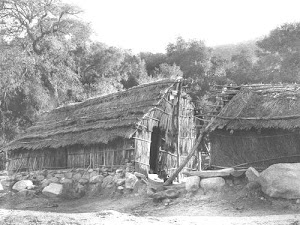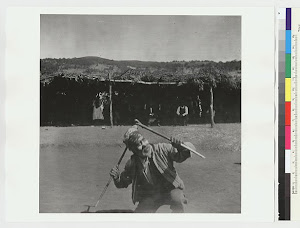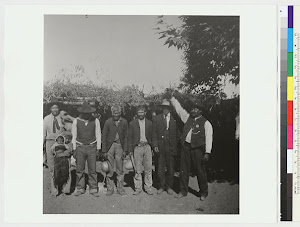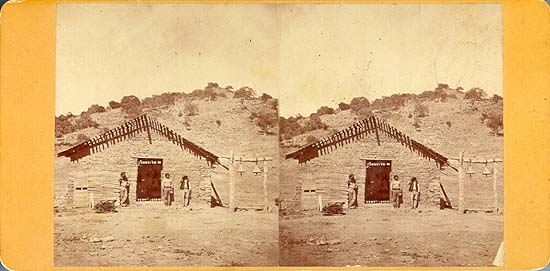*Report Shows High Regional Lung and Colorectal Cancer Rates in AmericanIndians and Alaska Natives in the United States, 1999-2004*Author: CDChttp://www.cdc.gov/cancer/healthdisparities/what_cdc_is_doing/aiansupplement.htmPublished on Aug 21, 2008 - 7:32:37 AMAug. 20, 2008 - CDC released the most comprehensive cancer data availablefor American Indians and Alaska Natives (AI/AN) across the United States.Cancer incidence rates, especially lung and colorectal, among AI/AN men andwomen varied greatly across six geographic regions of the country (Alaska,East, Northern Plains, Pacific Coast, Southern Plains, and Southwest). Thedata was analyzed from CDC's National Program of Cancer Registries, theNational Cancer Institute's Surveillance, Epidemiology and End Results andlinkage to the Indian Health Services records. These findings, "CancerIncidence in American Indian/Alaska Native (AI/AN) Populations" werepublished online today and appearing in the September 1, 2008, supplement ofCancer.The supplement of 16 studies also focuses on disparities in health riskbehaviors and cancer test use, explains how incidence rates vary widely byregion, and methods for improving cancer surveillance among the AI/ANpopulations.WHO: Some CDC co-authored articles include:Lung Cancer Incidence among American Indians and Alaska Natives in theUnited States, 1999-2004 details the enormous variation in lung cancerincidence rates across Indian Health Service regions. In the NorthernPlains, AI/AN had the highest rates, followed by Alaska, and the lowestrates were in the Southwest.Regional Differences in Colorectal Cancer Incidence, Stage, and Subsiteamong American Indians and Alaska Natives, 1999-2004 describes how AI/ANliving in Alaska and in the Northern Plains regions have significantlyhigher incidence rates of colorectal cancer compared to non-Hispanic white(NHW) persons. Also, AI/AN in all regions were more often diagnosed at laterstages.Cancer in American Indian and Alaska Native Young Adults (20-44 years ofage): United States, 1999-2004 describes how the cancer patterns thatcharacterize the overall AI/AN population are apparent among young adults inwhom the rates also varied for selected cancers across Indian Health Serviceregions.Breast Cancer Incidence among American Indian and Alaska Native Women-UnitedStates, 1999-2004 describes how breast cancer incidence rates among AI/ANwomen varied significantly across Indian Health Service regions. The highestrates were in Alaska and the Northern and Southern Plains and were similaror slightly lower than in NHW women; the lowest rates were in the Southwestand were less than half the rate of NHW women. AI/AN women in all regionswere less likely than NHW women to be diagnosed with localized breastcancer.Regional differences in cervical cancer incidence among American Indians andAlaska Natives, 1999-2004 shows that for all regions combined incidencerates of cervical cancer for AI/AN women exceeded those NHW women and variedby geographic area.Gallbladder Cancer Incidence among American Indians and Alaska Natives,United States, 1999-2004 reveals that, compared to NHW populations, AI/ANhad significantly higher gallbladder cancer incidence rates in most regionsof the country.Cancers of the Urinary Tract among American Indians and Alaska Natives inthe United States, 1999-2004 describes how AI//AN have approximately 50percent greater risk of kidney cancer, although half the risk of bladdercancer compared to NHW.Primary Liver Cancer Incidence Among American Indians and Alaska Natives,United States, 1999-2004 describes the high liver cancer incidence ratesamong AI/AN compared to NHW for all regions except the East. The highprevalence of known risk factors for primary liver cancer among AI/ANpopulations likely make this cancer an important future health concern forthis population.Incidence of Cancers of the Oral Cavity and Pharynx Among American Indiansand Alaska Natives, 1999-2004 show that incidence rates for cancers of theoral cavity and pharynx for AI/AN should be examined by individual anatomiccancer site and by geographic region when describing cancer burden andplanning cancer control activities.Prostate Cancer Incidence Among American Indian and Alaska Native Men,United States, 1999-2004 reveals that prostate cancer incidence rates andprostate specific antigen (PSA) testing were lower and varied regionallymore for AI/AN men than for NHW men underscoring the need for research tobetter understand regional variation in incidence and to reduce thedisparity in stage distribution.Gastric Cancer among American Indians and Alaska Natives in the UnitedStates, 1999-2004 describes how AI/AN populations are at greater risk forgastric cancer than NHW populations and that relatively high rates of cancerin the central/distal portions of the stomach among AI/AN in some geographicregions may indicate a disproportional burden of H. pylori-associateddisease.WHEN: For the online articles, to go www.interscience.wiley.com/cancer, andfor information about CDC's efforts in cancer prevention and control, pleasevisit www.cdc.gov/cancer.(c) Copyright YubaNet.com
Thursday, August 21, 2008
*Report Shows High Regional Lung and Colorectal Cancer Rates in American
Posted by
Karen Vigneault Librarian
at
8:52 AM
![]()
Subscribe to:
Post Comments (Atom)













No comments:
Post a Comment